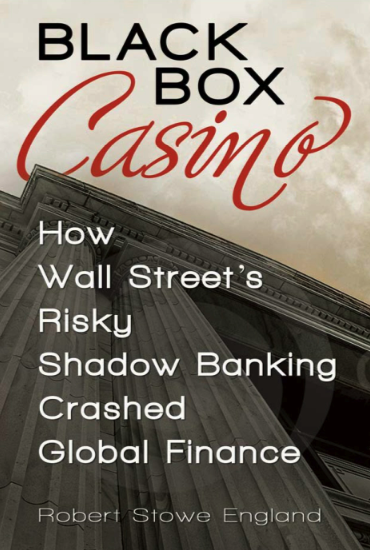ETFs And Shadow Banking Opinion
Post on: 7 Апрель, 2015 No Comment

By Paul Amery | 28 April, 2011
As we pointed out last week. ETF issuers have given quite diverse responses to the three ETF-related studies that came from regulators in quick-fire succession in the middle of April. A roundtable of issuer comments on the same subject in ETFM also suggests some confusion about how to respond to regulators—or even what the underlying concerns are.
There are some common themes that come out in the responses, nevertheless: ETFs are regulated funds in Europe and are compliant with the existing regulations, said one issuer; active funds often engage in the same activities (of securities lending, for example) and are not subject to the same scrutiny as is currently being applied to the ETF market, said another; the gross level of derivatives exposure in ETFs is not that meaningful when compared to the overall size of the bilateral derivatives market, a third reply suggested.
At the same time there seems to be an acceptance that further regulatory guidelines on disclosure are on the way. Indeed, the ETF industry has arguably been pre-empting any such new rules. Take, for example, the decision by several swap-based ETF issuers to start publishing details of their collateral baskets over the last year.
On the other hand, there are still several underlying activities in the ETF market that remain either completely or substantially opaque to the end-investor: securities lending practices; collateral management policies in synthetically replicated funds; and the contractual details of the total return swaps themselves.
But, more fundamentally, what’s driving the regulators to make public their specific concerns about the ETF market?
A clue comes in a speech given by the Bank of England’s deputy governor, Paul Tucker, last year, entitled “Shadow Banking, Financing Markets and Financial Stability ”.
Defining shadow banking as “those instruments, structures, firms or markets which…replicate the core features of commercial banks: liquidity services, maturity mismatch and leverage”, while existing outside the official system, Tucker names particular categories of the shadow banking system that might pose threats to broader financial stability: money market mutual funds; finance companies; asset-backed commercial paper (ABCP) and structured investment vehicles (SIVs); securities dealers and particularly their prime brokerage units; securities lending; and the residential mortgage-backed securities (RMBS) and repo markets.
It appears that ETFs have just been added to Tucker’s list.

Why? Note the emphasis in the FSB’s paper from two weeks ago on the possible use of ETFs as “collateral in a long chain of secured lending and rehypothecation [which] may create operational risks and contribute to the build up of leverage”. Observe the particular focus in the working paper on ETFs from the BIS on banks’ capital structure, liquidity coverage ratios and the possible use of swaps in synthetic ETFs to create a maturity mismatch in banks’ asset/liability management. Under current rules, banks may be able to account for their ETFs as a source of stable, longer-term funding, says the BIS, while in fact ETFs offer investors the ability to withdraw cash at will. There’s an implicit and potentially risky maturity mismatch, in other words.
So it seems to make sense to see the latest pronouncements by regulators on the ETF market as part of a much broader campaign from them to analyse, understand and ultimately rein in the shadow banking system. Requiring banks to allocate higher risk weightings to non-standard sources of funding, such as ETFs, could, in turn, undermine the business models of some issuers, as could restrictions on other activities, such as securities lending.
That regulators are serious in their intent to impose new constraints on the shadow banking sector is without doubt. Although it had nothing to do with ETFs, the U-turn imposed on Barclays this week—the bank was forced to repurchase Protium, a special purpose vehicle it had spun off in 2009 to hold toxic assets, after Basel III rules made the bank set aside more capital to back the loan it had made to the SPV—is a tell-tale sign that the rules are being tightened up.
Ultimately, regulatory pressure of this type may force a long overdue consolidation of European ETF ranges. Perhaps we’ll get some slimming down of those 50 European listings of funds tracking the Euro Stoxx 50 index after all.














